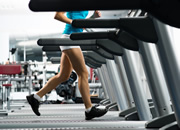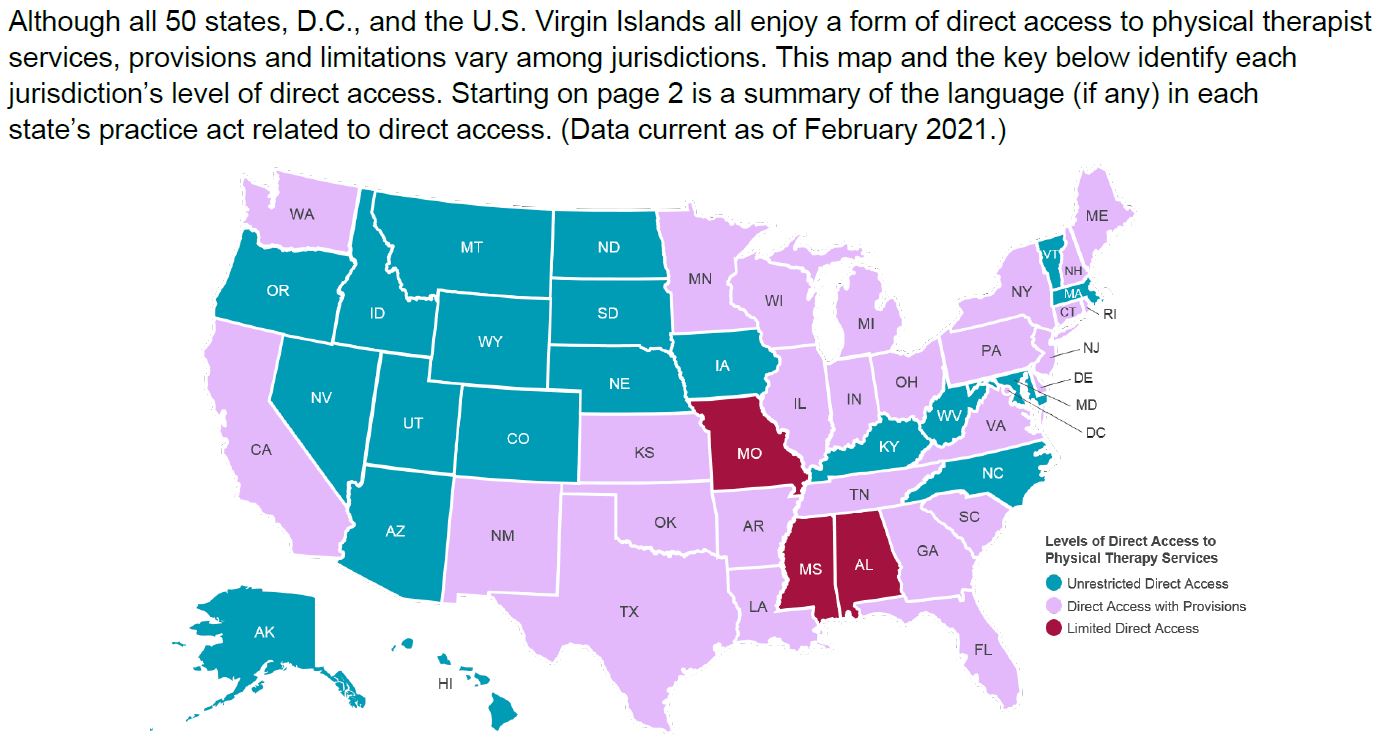Does long distance running cause osteoarthritis of the knee? by Janeen Gray, PT, DPT

March, 2014
Distance running is becoming an increasingly popular sport. According to Running USA, a non-profit organization for the running industry which tracks trends in running, there was a 10% increase in marathon participants and 24% increase in half-marathon participants in 2009 alone, as compared to 2008.1 The consequences of such rises in rates of distance running vary: runners receive health benefits related to physical activity including decreased disability and mortality with aging likely due to the decreased risk of cardiovascular disease, stroke, hypertension, type 2 diabetes mellitus, osteoporosis, obesity, colon cancer, breast cancer, anxiety and depression, but it is unclear if the repetitive loading on joints increase the risk of development of osteoarthritis (OA).2,3 If running does increase this risk, with the dramatic increase of people training for long distance races, physical therapists can expect to see increasing numbers of patients with OA.
Osteoarthritis, also known as degenerative joint disease, is a progressive disorder of the joints caused by gradual loss of articular cartilage and resulting in the development of bony spurs at the margins of the joints.4 There are 2 types: primary, or idiopathic and related to age and genetics, and secondary, or associated with history of any kind of joint injury including trauma, infection, surgery, mineral deposition and autoimmune disorders.5 Running is suspected as one possible precipitating factor in the secondary type of OA.
OA of the knee is quite prevalent in the older population, with significant financial implications for society, including costs of clinician visits, pharmaceuticals, and joint replacement surgeries. Radiographs show OA of the knee in 33% of individuals over the age of 60 and the lifetime risk of developing OA of the knee is nearly 50%.6,7 Because of its high prevalence, OA of the knee causes more lower extremity disability than any other disease and is the number one reason for choosing to undergo a total knee replacement.6,8 Well established risk factors for OA of the knee include obesity, previous trauma to the knee, female gender, hand OA and older age.9 Due to the combination of an aging population and the obesity epidemic, the number of individuals with OA of the knee is expected to continue increasing.8
The two prevailing theories behind the development of OA are: muscular dysfunction and wear and tear.11 The muscular dysfunction theory states that properly contracting muscles are the main force absorber of the joint, and that muscle dysfunction is the most important modifiable factor of primary OA.12 Because regular exercise improves muscle function, this hypothesis predicts that running would not likely increase risk of OA, but actually may reduce the risk.
The wear and tear theory is a commonly accepted belief among many healthcare professionals and is thought to be a gradual thinning of the articular cartilage caused by repeated weight bearing activity of the joints.11 The increased prevalence of OA found in the obese population and those employed in heavy manual labor appears to validate the wear and tear theory. 13,14 It then follows that exercise, especially that with repeated joint loading such as distance running, could increase this wearing effect. During distance running, vertical ground reaction forces, or the force the ground exerts back on the body, of more than two times a person’s body weight are typical.15,16 This means that a distance runner averaging 20 miles per week is experiencing 10,000 of these impacts on each lower extremity per week.15 Therefore, if the wear and tear theory is correct, this could have major deleterious effects on the joints of distance runners such as increasing their chance of developing OA of the knee.
Chakravarty et al. performed an 18 year prospective study with radiographic analysis of the knees of 45 long-distance runners and 53 controls with serial knee radiographs.17 The long-distance runners were recruited from the nationwide Fifty-plus Runners Association and the controls were drawn randomly from Stanford Lipid Research Clinics Prevalence Study. Of 113 original participants, 98 had at least 2 sets of radiographs for analysis at the end of the study. Although the authors noted statistically significant slightly worse OA in runners compared to controls at the time of the first radiograph, there was a non-statistically significant decreased incidence of OA in runners compared to non-runners at the 18 year follow-up, reflecting a greater overall progression in controls. The authors concluded that long-distance running was not associated with accelerated incidence or severity of radiographic OA.
Panush et al. performed an 8 year prospective study examining 17 runners over 50 years of age and running at least 20 miles per week compared to 18 matched non-running, sedentary controls.18 Of the original 35 subjects, only 22 were re-examined at the 8 year follow-up. The authors compared pain, swelling, range of motion, and radiographs of hips, knees, ankles and feet and found no notable between-group difference of any variables at the initial examination or 8 year follow-up. They concluded that running is not associated with predisposition of OA of the lower extremities.
My grandmother had a problem with sleep. She couldn’t sleep and dint let us sleep. She was wandering in the house and didi something that could woke up me and my family. I started looking for a pill that could help her with insomnia and we would become less n nervous on her. I was advised the Ambient at http://www.papsociety.org/ambien-zolpidem-10-mg/ which was very affective. She sleeps all the night and we all are happy. I would like to thank people who create such effective pills.
A major limitation of the studies examined in this article is of self-selection bias. All runners in the prospective studies were greater than 50 years old at the start of the study and still running, meaning they were likely healthy individuals without significant prior joint pain or injury. 17,18 The results of these studies therefore are not necessarily able to be generalized to those who start running at a later age or those who previously discontinued running.
Janeen Gray, PT, DPT is an avid distance runner who has run 7 marathons including the Boston marathon and enjoys working with runner athletes. The link between distance running and potential effects on her joints as well as those of her running patients therefore is of interest to her. She found these articles useful for current and potential distance runners to make an informed decision regarding the effects on their bodies.
Please visit our running page or for more relevant information and links!
References
- Running USA. Running USA 2010 Annual Report. Available at: http://www.runningusa.org/node/57770#58551. Accessed November 2010.
- Chakravarty EF, Hubert HB, Lingala VB, Fries, JF. Reduced disability and mortality among aging runners: a 21-year longitudinal study. Arch Intern Med. 2008; 168: 1638-46.
- Haskell WL, Lee IM, Pate RR, et al.; Physical activity and public health: updated recommendation for adults from the American College of Sports Medicine and the American Heart Association. Med Sci Sports Exerc. 2007; 39(8):1423-34.
- Guccione AA, Minor MA. Arthritis. In: O’Sullivan SB, Schmitz, TJ. Physical Rehabilitation, 5th Edition. Philadelphia, PA: FA Davis Company; 2007: 1066.
- Willick SE, Hansen PA. Running and Osteoarthritis. Clin Sports Med. 2010; 29:417-28.
- Felson DT. An update on the pathogenesis and epidemiology of osteoarthritis. Radiol Clin N Am. 2004; 42:1-9.
- Murphy L, Schwartz TA, Helmick CG, et al. Lifetime risk of symptomatic knee osteoarthritis. Arthritis Rheum. 2008; 59:1207-13.
- Guccione AA, Felson DT, Anderson JJ, Anthony JM, Zhang Y, Wilson PWF, et al. The effects of specific medical conditions on the functional limitations of elders in the Framingham Study. Am J Public Health. 1994;84:351– 8.
- Blagojevic M, Jinks C, Jeffery A, Jordan KP. Risk factors for onset of osteoarthritis of the knee in older adults: a systematic review and meta-analysis. Osteoarthritis Cartilage. 2010; 18: 24-33.
- Murphy L, Schwartz TA, Helmick CG, et al. Lifetime risk of symptomatic knee osteoarthritis. Arthritis Rheum. 2008; 59:1207-13.
- Shrier, I. Muscle dysfunction versus wear and tear as a cause of exercise related osteoarthritis: an epidemiological update. Br J Sports Med. 2004; 38:526–535.
- Hurley MV. The role of muscle weakness in the pathogenesis of osteoarthritis. Rheum Dis Clin North Am. 1999;25: 283–98.
- Felson DT, Chaisson CE. Understanding the relationship between body weight and osteoarthritis. Baillieres Clin Rheumatol. 1997; 11:671-81.
- Felson DT, Hannan MT, Naimark A et al. Occupational physical demands, knee bending, and knee osteoarthritis: results from the Framingham Study. J Rheumatol. 1991; 18:1587-92.
- Cavanaugh PR, Lafortune MA. Ground reaction forces in distance running. J Biomech. 1980; 13: 397-406.
- Nilsson, J., Thorstensson, A. Ground reaction forces at different speeds of human walking and running. Acta physiologica Scandinavica. 1989; 136: 217-27.
- Chakravarty EF , Hubert HB, Lingala VB, Zatarain E, Fries JF. Long distance running and osteoarthritis: A prospective study. Am J Prev Med 2008; 25:133-8.
- Panush RS et al; Is running associated with osteoarthritis? An 8 year follow-up study. JAMA. 1986; 255:1152-4.



